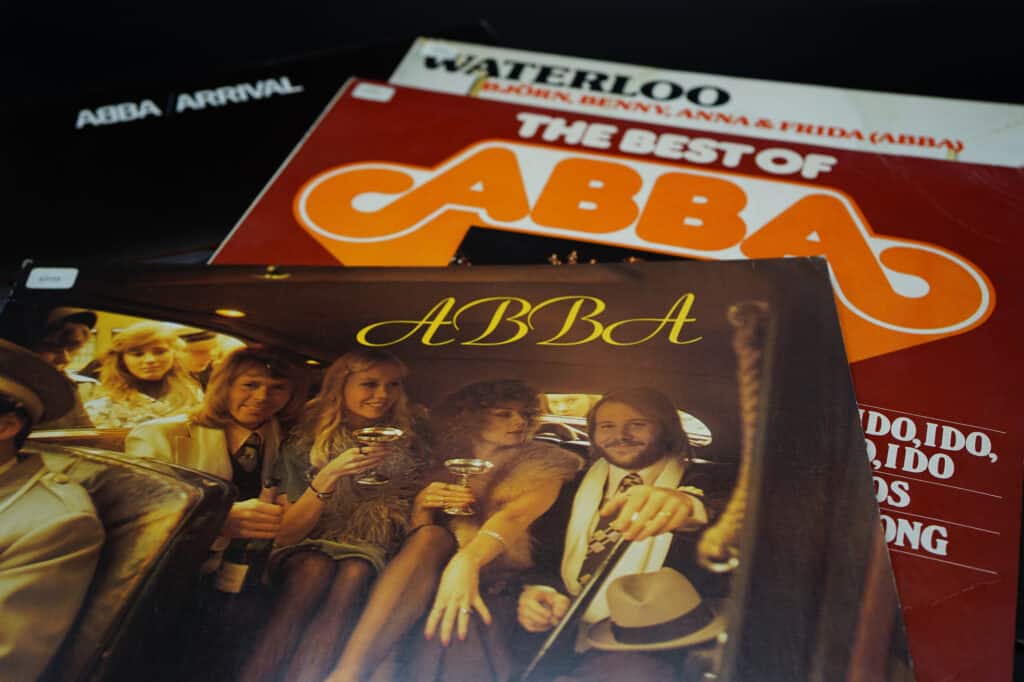ABBA’s most popular song, “Dancing Queen” has also been inducted into the Grammy Hall of Fame. Who is the song about?
“Dancing Queen” tells the story of an unnamed seventeen-year-old visiting a disco and expressing themselves through dance. The song has become a timeless dance-pop classic and remains a dance floor favorite and LGBT anthem until the present day. The song was ABBA’s only US number one.

For more on the creation and impact of “Dancing Queen”, read on.
Recording
In 1975, disco music was dominating the charts in America and ABBA looked to incorporate some of the genre’s stylings into their next release.
The song was written by ABBA members Benny Andersson and Björn Ulvaeus, as well as the group’s manager, Stig Anderson. They drew inspiration from the music of George McCrae and Dr. John and also has a similar sound “Sing My Way Home” by Delaney and Bonnie.
The original demo of the song was named “Boogaloo”, which might not have had the same timeless appeal as its eventual title of “Dancing Queen”. During early recording sessions, Benny Andersson played the backing track for fellow group member Anni-Frid Lyngstad and she allegedly began crying.
A section of the song’s second verse was scrapped during recording but can still be heard in recording session footage.
The song tells the story of an unnamed seventeen-year-old going to the disco and dancing, drawing the attention and admiration of the other people at the disco before moving on.
Release
Despite the unpredictability of the music industry, ABBA were extremely confident about the prospects for “Dancing Queen”. The song, which had been recorded on August 4-5 in 1975, was released a full year later in 1976 to coincide with the band’s new album “Arrival”.
The song premiered on TV in Germany and Japan in the spring of 1976. The group performed it live for the first time on June 18, 1976, during an all-star event at the Swedish Royal Opera, the day before the wedding of King Carl XVI Gustaf of Sweden and Silvia Sommerlath.
When the single eventually released in August 1976, it was a global hit. It topped the chart in ABBA’s home country of Sweden, as well as numerous other charts such as the United Kingdom, Australia, Canada, Germany, and South Africa.
“Dancing Queen” also became a number one in the United States, marking the only time that ABBA topped the Billboard Hot 100 chart. ABBA were now truly established as global superstars and the song marked the beginning of the group’s four-year “classic period”.
Impact
Despite riding the wave of momentum of the 1970s disco during its release, “Dancing Queen” has long outlived the popularity of disco. It is not just a disco song but also a dance-pop classic and has been covered numerous times by groups including U2 and solo stars such as Kylie Minogue and Carol Douglas.
The song’s theme of a person visiting the disco and expressing themselves openly made it hugely popular in the LGBT community. It has been one of the iconic “gay anthems” since its release.
“Dancing Queen” frequently ranks highly in polls of the greatest pop and dance songs of all time. The song was inducted into the Recording Academy’s Grammy Hall of Fame in 2015.
Senator John McCain named the song as his favorite of all time during his 2008 US presidential campaign. It has also been said that “Dancing Queen” is appropriately the favorite song of Queen Elizabeth II, as she is the Queen and likes to dance.
Another famous example of the song’s enduring popularity occurred during a 1996 Sex Pistols reunion show. Numerous cheesy 1970s pop songs were played for the audience before the show started to show the state of music before the rise of punk.
When “Dancing Queen” was played, however, the crowd of old punks began singing it together.